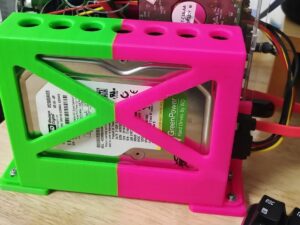Gallery
About Project
SLS 3D Printed PP Springs present a game-changing alternative to traditional metal springs, offering remarkable elasticity and a unique grainy surface finish. When you pinch the PP spring, you will feel its impressive elasticity and resilience, ensuring optimal performance in demanding applications.
Engineered for multiple applications, these versatile springs showcase exceptional flexibility, durability, and a host of benefits that make them a compelling choice. Let’s delve into the fascinating world of SLS 3D Printed PP Springs and explore their potential applications.
While metal springs have been the go-to choice for many years, SLS 3D Printed PP Springs offer distinct advantages. The use of Polypropylene as the primary material provides excellent elasticity and chemical resistance, making these springs ideal for various industries, including automotive, consumer goods, and medical devices.
If youŌĆÖre in need of custom springs with tailored specifications, SLS 3D Printed PP Springs from reputable printing service providers can fulfill your requirements. By leveraging advanced 3D printing technologies, companies like Facfox offer the expertise to deliver precise and functional SLS PP springs. Their team can assist in optimizing designs, ensuring a seamless transition from concept to production.
Embrace the possibilities of SLS 3D Printed PP Springs and discover their exceptional elasticity and unparalleled design freedom. Whether you require prototypes, low-volume production, or specialized parts, partnering with a reliable printing service provider like Facfox can help you unlock the full potential of these innovative springs.
Solution
- Step 1: The Polypropylene (PP) powder was preheated to a specific temperature.
- Step 2: A thin layer of PP powder was evenly spread onto a build platform.
- Step 3: A high-powered laser beam was directed onto the powder layer, selectively sintering the material according to the 3D model.
- Step 4: Once the first layer was sintered, subsequent layers of powder were applied and sintered, gradually building up the spring’s structure.
- Step 5: After completing the printing process, the build platform with the sintered PP springs was removed from the 3D printer.
- Step 6: The excess, unsintered powder surrounding the springs was carefully extracted.
- Step 7: Finally, the SLS 3D Printed PP Springs were inspected for quality and functionality before being used for their intended applications.









